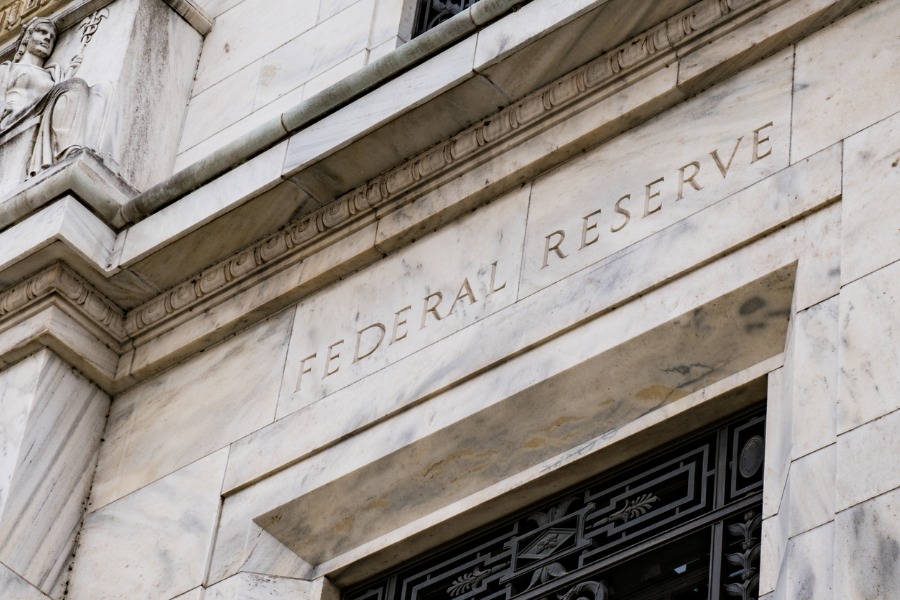

A weak July jobs report has fueled fears the Federal Reserve has already waited too long to lower interest rates, but policymakers are unlikely to respond with a jumbo-sized cut in September that might signal alarm.
US hiring slowed markedly in July and the unemployment rate rose to the highest level in nearly three years, a report from the Bureau of Labor Statistics showed Friday.
“We’d never want to overreact to any one month’s numbers,” Chicago Fed President Austan Goolsbee said in an interview with Bloomberg Television’s Michael McKee and Sonali Basak.
Some major Wall Street Banks, including JPMorgan Chase & Co. and Citigroup Inc., changed their calls after the report to predict a half-point move when policymakers next meet in September. More broadly, futures investors responded by pricing in a 50-basis-point cut next month and at least 50 more by the end of the year.
Still, in addition to Goolsbee, many economists who watch the central bank closely pushed back almost immediately.
“Given Fed officials’ hawkish bias, I would anticipate this seals the deal for a September cut, but there will be resistance to a 50-basis-point cut,” said Gregory Daco, chief economist for Ernst & Young LLP.
Joseph Lavorgna, chief economist at SMBC Nikko Securities, was more emphatic: “If the Fed goes 50, it will look like panic,” he said, adding markets had “gotten ahead of themselves” in pricing big cuts.
Richmond Fed President Thomas Barkin, in an interview with the New York Times, also leaned away from the notion that any cut exceeding a quarter percentage point would be appropriate.
“More significant reductions typically would be associated with an economy that feels like it’s deteriorating rapidly,” he said.
While Friday’s report represented a slowdown, he described 114,000 new jobs as a “reasonable number.”
During Jerome Powell’s tenure as chair, the Federal Open Market Committee has only used super-sized moves during emergencies. In the first two weeks of March 2020, it cut its benchmark rate by 1.5 percentage points to rapidly reach zero as Covid-19 began slamming the US economy. In 2022, the FOMC raised rates in both 50- and 75-basis-point steps in the face of escalating inflation.
Large moves have signaling effects that communicate an emergency or aggressive response. To many Fed-watching economists, Friday’s labor market data didn’t rise to a level of imminent threat that has caused the committee to make big moves in the past.
Additionally, Fed officials frequently comment that they do not respond to a single economic report and instead base policies on trends that develop over many months.
Nonfarm payrolls rose by just 114,000 in July after downward revisions to the figures for the prior two months, the BLS said Friday. That was lower than all but one forecast in a Bloomberg survey of economists and one of the weakest prints since the pandemic. Average hourly earnings also came in below forecast.
“There have to be a few members of the FOMC who believe that they are now behind the curve on policy, although the majority still seem to favor a cautious approach,” said Kathy Jones, chief fixed-income strategist at Charles Schwab. “If the economic data continue to be weak, then a 50 basis-point cut is possible.”
A few economists said the Fed would entertain such a cut, with Evercore ISI analysts led by Krishna Guha viewing it as “a realistic possibility” that would be the likely case if there were a more marked weakening in the labor market.
“The Fed is likely feeling remorse over its decision to wait on rate cuts, given they clearly discussed them at the July meeting,” said KPMG Chief Economist Diane Swonk, who said a half-point move is possible. “They will be forced to cut more aggressively in September before the window on a softish landing closes entirely.”
Some political pressure also emerged for faster action from the Fed. Democratic Senator Elizabeth Warren, a regular critic of Powell, calling on the Fed to lower rates even before September.
“The jobs data is flashing red, Powell needs to cancel his summer vacation and cut rates now — not wait 6 weeks,” she said in a posting on X.
Officials discussed cutting rates at this week’s meeting, but ultimately kept them unchanged at a two-decade high for an eighth straight meeting. At a post-meeting press conference Wednesday, Powell said the committee wasn’t currently thinking about a half-point cut.
“I don’t want to be really specific about what we’re going to do, but that’s not something we’re thinking about right now,” he said.
Powell said officials are now increasingly focused on employment side of their dual mandate and want to prevent undue harm to the labor market now that inflation has largely come down from its pandemic peak.

Executives from LPL Financial, Cresset Partners hired for key roles.

Geopolitical tension has been managed well by the markets.

December cut is still a possiblity.

Canada, China among nations to react to president-elect's comments.

For several years, Leech allegedly favored some clients in trade allocations, at the cost of others, amounting to $600 million, according to the Department of Justice.
Streamline your outreach with Aidentified's AI-driven solutions
This season’s market volatility: Positioning for rate relief, income growth and the AI rebound
